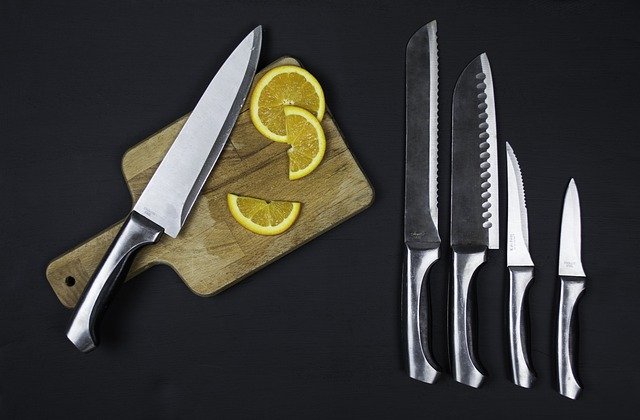Material Choices and Their Impact on Cutting Precision
Choosing the right materials for knives influences how precisely you can slice, dice, and prepare food. Material properties affect edge retention, corrosion resistance, maintenance needs, and how a blade interacts with different cutting techniques. This article explains those connections so you can make informed decisions about cutlery materials and care.

Material choices determine more than appearance: they shape how a blade performs in daily kitchen tasks and how consistently it holds a clean, sharp edge. In cutlery, factors such as steel composition, heat treatment, corrosion resistance, and handle materials affect slicing and dicing precision. Understanding these relationships helps cooks match a knife to their techniques and maintenance habits for safer, more accurate work.
What materials are used in cutlery and why?
Cutlery commonly uses stainless steels, carbon steels, and newer powdered or high-alloy steels. Stainless steels include chromium for corrosion resistance, which helps hygiene and reduces rust risk after contact with acidic foods. Carbon steel can take and hold a very keen edge but requires more careful maintenance because it is more prone to corrosion and staining. Powder metallurgy steels and tool-grade alloys can offer a balance between edge retention and corrosion resistance. Handle materials—wood, stabilized composites, and polymers—affect grip and overall balance, influencing how the blade tracks through food.
How does steel type affect the edge and sharpening?
Steel type directly influences edge retention and the frequency of sharpening. Harder steels usually keep a sharp edge longer, reducing how often you need to go through full sharpening sessions; however, they can be more brittle and prone to chipping if misused. Softer steels are easier to sharpen but require more frequent attention. Proper sharpening and honing routines extend usable edge life: sharpening removes metal to re-profile the edge, while honing straightens the micro-bevel formed during use. The right combination of steel and sharpening technique yields consistent slicing results.
How do sharpening, honing, and maintenance preserve precision?
Regular honing realigns the microscopic edge and helps maintain cutting accuracy between sharpening sessions. Sharpening—using stones, guided systems, or professional services—restores a true edge when honing no longer suffices. Maintenance also includes cleaning to prevent corrosion and avoiding damage from hard surfaces. Routine care preserves the edge geometry designed during manufacturing, ensuring cuts remain clean and predictable. Following care recommendations for a given material minimizes material loss and prolongs precision.
How do ergonomics, balance, and grip influence cutting control?
Ergonomics and balance change how force is transmitted from a cook’s hand to the blade. A well-balanced knife reduces user fatigue and improves control for repetitive tasks like slicing or dicing. Handle shape and material affect grip and tactile feedback; a secure grip promotes steady cuts and reduces slip-related errors. Balance between bolster and blade matters as much as the edge: even a well-made steel will perform poorly in inexperienced hands if the handle disrupts natural wrist and arm motion.
What role do corrosion resistance and hygiene play in precision?
Corrosion diminishes cutting precision by roughening the blade surface and accelerating wear at the edge. Stainless alloys mitigate this risk, supporting consistent hygiene and easier cleaning—important where cross-contamination or acidic foods are common. Conversely, blades that develop patina or rust require more aggressive maintenance to restore a smooth cutting surface, and heavily corroded edges may need regrinding. Choosing materials aligned with your cleaning habits and kitchen environment helps maintain both hygiene and accurate performance.
How do slicing and dicing techniques interact with materials and edge geometry?
Different techniques place varying demands on blade geometry and material. Thin, acute edges excel at precise slicing and produce clean cuts in delicate items, while more robust bevels withstand twisting and tougher tasks like chopping dense vegetables. Materials with excellent edge retention favor repetitive slicing because they reduce the need for frequent resharpening; more ductile steels can be better for tasks that risk edge deformation. Matching blade geometry and material to your common slicing and dicing routines boosts precision and reduces repair frequency.
Material choice is a practical compromise among edge retention, toughness, corrosion resistance, and maintenance workload. Understanding how steel types, handle materials, and surface treatments influence sharpening needs, ergonomics, and hygiene helps cooks select cutlery that supports consistent, precise cutting. Regular honing, appropriate sharpening intervals, and cleaning routines tailored to the material keep blades performing as intended for accurate slicing and dicing.





